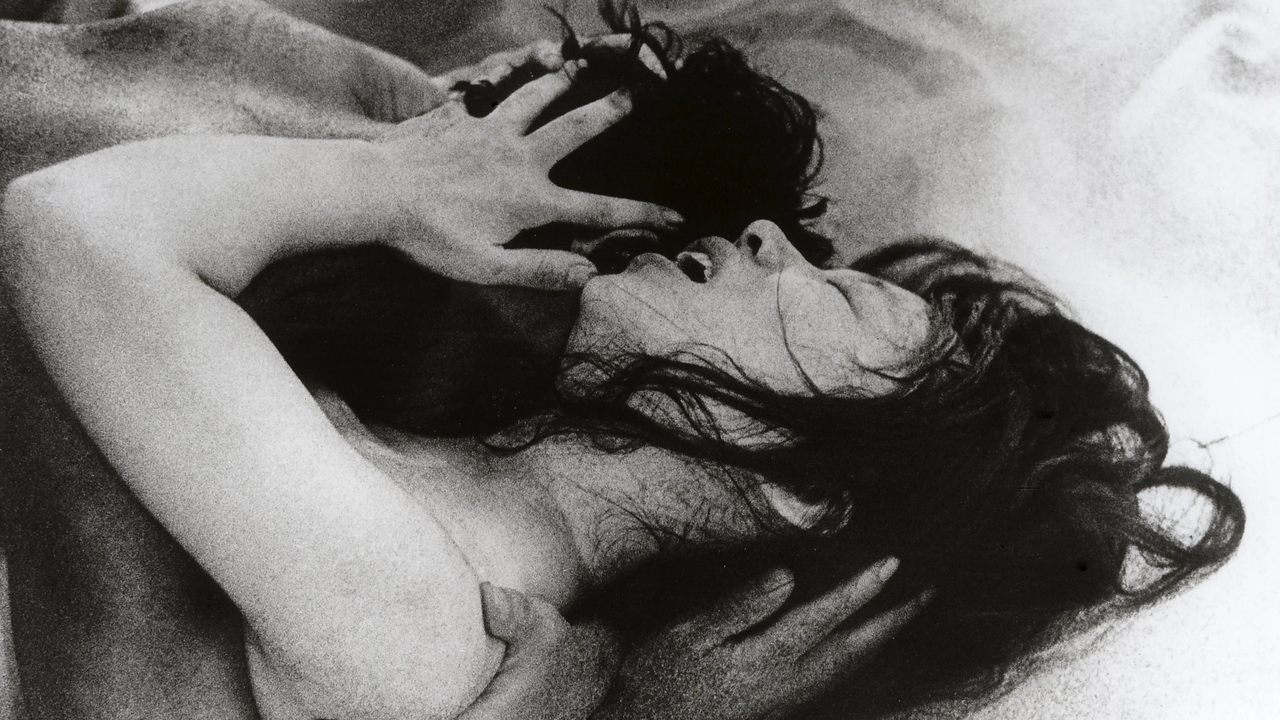

This is most beautiful, masterpiece, underrated, surprising, excellent, delicate, wonderful, terrifying and creepy film, and great cinematography.It is amazing to build and create sandy land, that are both wonderful, charming, seductive, hypnotic, exquisite, beautiful and creepy place.Reflect the dark side and horror of man and nature, show struggles and surrender (or hope and hopeless) of man on nature, and latent powerful philosophy and invite to pondering.
... View MoreWoman in the Dunes, like most Eastern fare, truly has the symbolism down. The fact that an entomologist collecting and trapping bugs only to share a similar fate is marvelously used, especially with the skill and care taken to show and develop the inanimate character of the sand that becomes his cell and permeates his whole existence for the most part.But that is where the skill ends, unfortunately. The human characters get far less development than the sand and we begin to be told motivations instead of shown. What's worse, the told motivations make no sense, like the ludicrous stated reason for the man's imprisonment. To top that, sometimes told motivations even contradict the previously shown motivations/character development! We are meticulously and masterfully shown as this man shed all other objectives for a single goal, that, at the end of the movie, we are told he abandons for a reason that makes absolutely no sense.Yet another example of plot driving character is where the main character, slightly desperate for something not essential for life, actually contemplates a bargain with his clearly untrustworthy captors to commit a despicable act for what he wants in return. Now I understand Japanese morals are different than those of my Western self, but from the comments of another Japanese character in the movie, clearly it is a despicable act even to the Japanese. Yet, without really showing why the main character, until this point shown as a fairly decent man, would even THINK about this nasty bargain let alone possibly go through with it on the hope that arguably bad guys would keep their word, we are just expected to believe he would?This movie starts out great and is beautifully shot, but without better character development and shown motivation for the human characters, this became a two hour disappointment.
... View MoreDear Hiroshi Teshigahara, Woman in the Dunes was awash with this uniquely hypnotic and claustrophobic aura. The film can be enjoyed for the visual experience alone. The first few scenes with the man walking across the desert was enough to hook me in completely. Toru Takemitsu's dissonant score is used throughout the film to create this paranoid and horrifying atmosphere. I wish you had used a more traditional score. The main narrative is interwoven with visuals of sand trickling down and mountains crumbling which creates a really eerie effect. The interactions between the man and the woman inside the closed space of the hut reminded me of this quote by Christopher Isherwood from his novel The Single Man: "Think of two people, living together day after day, year after year, in this small space, standing elbow to elbow cooking at the same small stove, squeezing past each other on the narrow stairs, shaving in front of the same small bathroom mirror, constantly jogging, jostling, bumping against each other's bodies by mistake or on purpose, sensually, aggressively, awkwardly, impatiently, in rage or in love – think what deep though invisible tracks they must leave, everywhere, behind them!"The close ups of their bodies and the shots from behind the naked body of the woman were used to emphasize the intimate and erotic nature of their relationship. The outdoor scenes, especially the ones in the pitch dark of the night were haunting. Some writers of noir flicks could conjure up some interesting ideas based on those visuals. Best Regards, Pimpin. (8/10)
... View MoreDark and hypnotic, minimalist and absurd, transcendental and meditative are the first words which come to my mind when describing Hiroshi Teshigahara's masterpiece Woman in the Dunes. It is a metaphysical story about being, freedom and the human mind, characterized by psycho-sexual associations, studying existence and the vanity of life. By using music, sounds and extreme close-ups in an innovative manner, Teshigahara succeeds to truly touch us. His reflection of an incredibly distressing reality achieves to create an enduring and haunting experience of unforgettable images and cinematic bliss which will not be forgotten.The story begins when an entomologist travels from Tokyo to the sand dunes of Japan to study the life of certain insects. However, his three-day long journey takes a turn when the local community traps him into a domicile at the bottom of a vast sand pit. There, living with a lonely woman, he must try to survive as he goes through an unending and useless battle against the infinite nature.As the film unfolds on the screen, it begins to get even surrealistic features and grows out to be a story about an individual fighting for survival in a hostile environment. Furthermore, it includes an extraordinary sexual tension and an odd emotion of yearn and melancholy within. On one level, it depicts the Japanese mental landscape but could also be seen as a comment on the sudden affluence of Japan in the postwar era. In fact, the film drills down to the social themes of alienation and loneliness quite well while it offers a perverse picture of pathological mankind where the power game between the rulers and the oppressed continues.However, more important than the social aspect is the film's visual aesthetics and its relation with the themes. The vast and endless dunes almost resemble expressionistic art where distorted picture of reality reflects an inner vision. In the middle of Antonionian landscapes, people feel lost and trapped. Teshigara has tapped into this situation perfectly with regards to the poetics of space as the surrounding dunes and quicksand create a prison of mind where there is no way out. Thus, the visuals beautifully indicate the existential experience and agony of man.I think it is fair to say that Teshigara's zen-aesthetics is partly Bressonian -- drama stripped to essentials -- where only the most integral part of the image is shown. The close-ups of wet and dry skin, sand and water are really almost erotic. In fact, the inertia felt in the middle of brutal nature is associated with sexuality, which is another intriguing theme in the film. As the relationship of the man and the woman evolves, the sexual tension tightens and the yearning of touch becomes more vivid and concrete. In this process, the protagonist is stripped down both physically and morally when his conception of humanity is put to test in the chaotic wilderness.
... View More